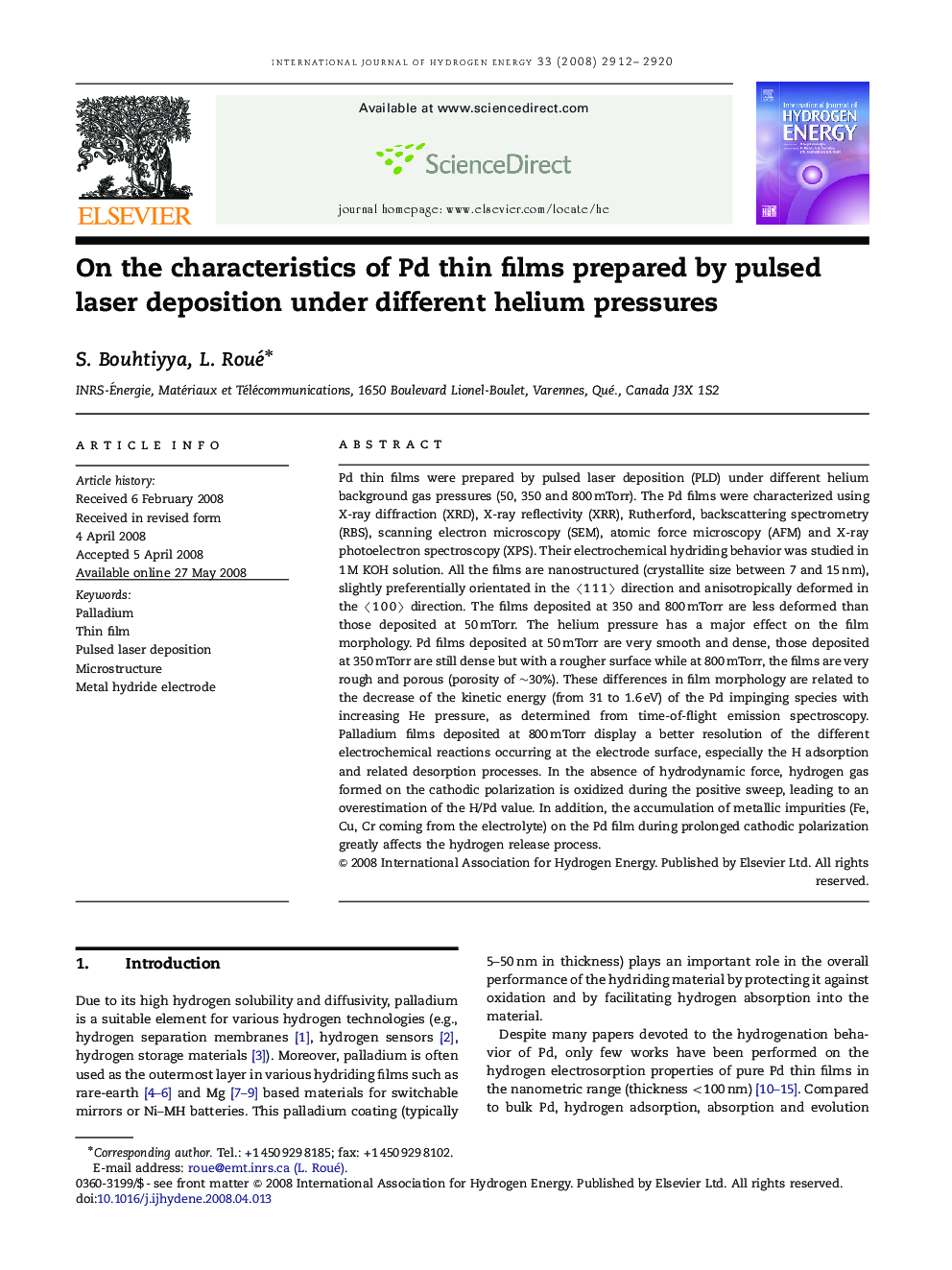| Article ID | Journal | Published Year | Pages | File Type |
|---|---|---|---|---|
| 1279575 | International Journal of Hydrogen Energy | 2008 | 9 Pages |
Pd thin films were prepared by pulsed laser deposition (PLD) under different helium background gas pressures (50, 350 and 800 mTorr). The Pd films were characterized using X-ray diffraction (XRD), X-ray reflectivity (XRR), Rutherford, backscattering spectrometry (RBS), scanning electron microscopy (SEM), atomic force microscopy (AFM) and X-ray photoelectron spectroscopy (XPS). Their electrochemical hydriding behavior was studied in 1 M KOH solution. All the films are nanostructured (crystallite size between 7 and 15 nm), slightly preferentially orientated in the 〈1 1 1〉 direction and anisotropically deformed in the 〈1 0 0〉 direction. The films deposited at 350 and 800 mTorr are less deformed than those deposited at 50 mTorr. The helium pressure has a major effect on the film morphology. Pd films deposited at 50 mTorr are very smooth and dense, those deposited at 350 mTorr are still dense but with a rougher surface while at 800 mTorr, the films are very rough and porous (porosity of ∼30%). These differences in film morphology are related to the decrease of the kinetic energy (from 31 to 1.6 eV) of the Pd impinging species with increasing He pressure, as determined from time-of-flight emission spectroscopy. Palladium films deposited at 800 mTorr display a better resolution of the different electrochemical reactions occurring at the electrode surface, especially the H adsorption and related desorption processes. In the absence of hydrodynamic force, hydrogen gas formed on the cathodic polarization is oxidized during the positive sweep, leading to an overestimation of the H/Pd value. In addition, the accumulation of metallic impurities (Fe, Cu, Cr coming from the electrolyte) on the Pd film during prolonged cathodic polarization greatly affects the hydrogen release process.
